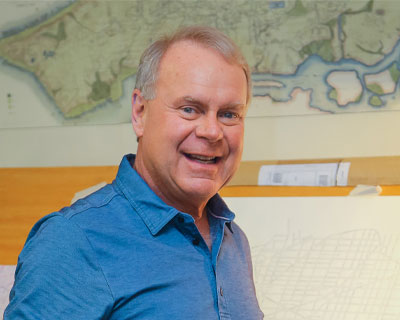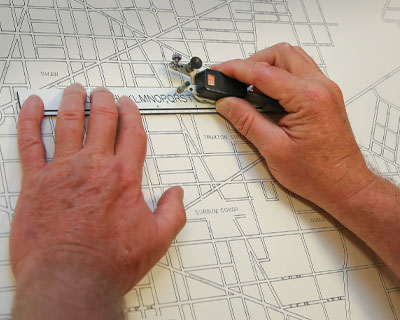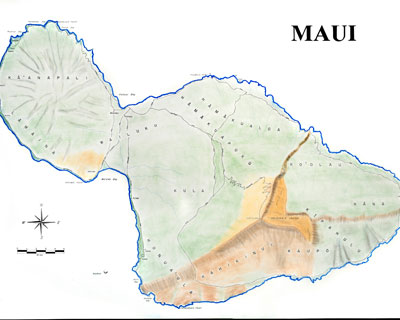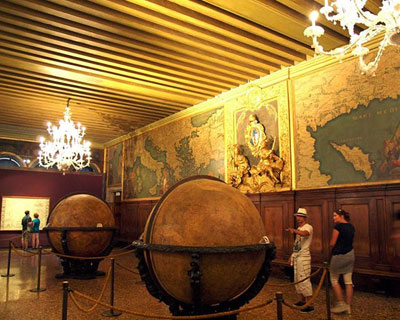Bruce Shields, our dear friend, just retired as editor of Scope. He had a favorite section that he wrote for each issue which he called, “What We Are Doing Today” series.
He told me it was his favorite part of Scope, as it allowed him to become better acquainted with some of our colleagues and, in the process, discover new and interesting things. It is my intention to keep this series up. So, I asked Dr. Robert E. Tibolt to get the ball rolling, and he was a wonderful choice, contributing to this article in many ways.

Robert E. Tibolt, MD, PhD
Dr. Tibolt grew up loving science, building models, and poring over encyclopedias, dictionaries, and maps. However, the only profession he ever wanted to pursue was that of being a physician. His love of maps became a love of mapmaking, which he now pursues professionally having retired from ophthalmology.
Dr. Tibolt attended Dartmouth College, where he majored in English, played football, attended a foreign study program in Germany, took a premed curriculum and learned to make maps. As a sophomore, he took a course in physical geography from Professor Van English. This fascinating course described many of the important surface features of the earth. As it happened, English demonstrated numerous landforms with examples from Nevada, which Tibolt knew personally from having lived there since the age of 12. Tibolt also attended a seminar in cartography taught by English. The course had a didactic component, teaching theory, history and projections, and a studio component with instruction for making maps in a professionally equipped drafting laboratory. English would make most of his points by drawing detailed freehand maps. He had the entire world in his mind having served as Gen. George Marshall’s private cartographer during World War II. He worked for the U.S. Office of Strategic Services (OSS), where it was said that he created false maps for distribution to the Germans. There is a tale that he once entered a Pentagon war room with Gen. Marshall and, seeing an unlabeled island marked with ships, aircraft and ground troops, English revealed its identity by asking, “What’s going on in Iwo Jima?” That almost landed him in the brig.
The class required a series of exercises to instill the skills needed for cartography, which included meticulous attention to detail, maximum preparation, minimal margin for error and confidence in one’s knowledge (sound familiar, doctors?). As a final project, Dr. Tibolt made a map of his overseas travels that included a unique projection to highlight his overland journey to Beirut, arriving just in time for the Lebanese Civil War in 1975.

Dr. Tibolt demonstrating mechanical lettering.
Dr. Tibolt went on to earn his PhD in anatomy at the University of Texas (UT) Medical Branch, and his MD at the UT Health Science Center in San Antonio. Dr. Tibolt took a rotation in ophthalmology and was sold the first time he looked through a slit-lamp microscope. He did his residency at the Oregon Health Sciences University program and joined a private practice group in Salem, Ore., where he practiced for 26 years providing general ophthalmology to his patients and community. He was also active in advocacy, serving as legislative chair for the Oregon Academy for 20 years and serving on numerous state affairs assignments for the Academy. He gave lectures and staffed residents in Portland.
Dr. Tibolt retired fully in 2018 and moved back to his home in Nevada. He continued to make maps as he had in college. He started with a drafting set from a pawn shop in Reno which he developed into a professionally equipped drafting studio and gallery in Las Vegas. Tibolt has a business making custom maps and large format maps in his “Great American Cities” series. So, his passionate avocation became his new vocation.
He uses traditional techniques of pen and ink, mechanical lettering, and coloring, all by hand, to make his maps. Dr. Tibolt feels that making maps by hand is neuropsychologically equivalent to performing ophthalmic surgery. Unless one is an intrepid explorer like Capt. James Cook, maps are made from other maps, with the cartographer changing the scale, projection, and other elements to achieve the desired design. Almost all maps today derive from a computerized system called Geographic Information Systems (GIS). While powerful and full of many layers of information, GIS offers no artistic character or the uniqueness of something made by hand. An aerial photograph is not a map. Only the latter emphasizes important features and relationships. Tibolt has assembled a large assortment of maps, but these are mostly material for his base maps and creations, and he does not consider himself to be a map collector.

Dr. Tibolt’s map of Maui, created for an ophthalmologist friend.
The master cartographers of the Age of Discovery created maps that are unparalleled in their beauty and craftsmanship. These artists were also philosophers and scientists of their day who relied on reports and data from the explorers themselves to create a geographic, political, social, or even scientific world view and express this through their maps. These were engravings; the original work was done on metal sheets, in mirror image to the final (as in indirect ophthalmoscopy). The newly created map was often shrouded in secrecy to protect the national interests of the cartographer’s country; knowledge was surely power. Gerardus Mercator is widely regarded as the greatest and most influential of these masters. His new projection view facilitated direct plots to set the course for sailors, and his prolific production of atlantes and individual sheets bore the latest and most accurate depictions of the New World and the world at large.
People love maps. Once a person sees a map, he or she is drawn into another world that stretches their imagination by provoking thoughts of travel or foreign cultures. The most popular custom maps that Dr. Tibolt creates are travel maps depicting people’s most memorable trips, honeymoons, and adventures. Maps are the most common form of art that conveys a sea of detailed concrete information.

Sala Dello Scudo, the map room at Doge’s Palace, Venice.
On a personal note, I remember visiting the magnificent Doge’s Palace in Venice. It was remarkable for its collections of Renaissance art (especially Hieronymus Bosch and Jacopo Tintoretto who depicted their views of heaven and earth respectively) but also for the map room (sala dello scudo) that dramatically displayed giant examples of the art form Dr. Tibolt has made into a new career. In this map room, you saw the source of Venetian sea power, understood the basis of the Mediterranean economy, as well as the influences of religions and cultures on the Venetian world view. When you have access to many maps, you see them as mirrors that project your own knowledge, experiences, cultures, and hopes, right back to you.
Dr. Tibolt lives in Las Vegas with his wife Susan, and works half-time at cartography in his business ArtMapMaker. His work can be viewed at artmapmaker.com.